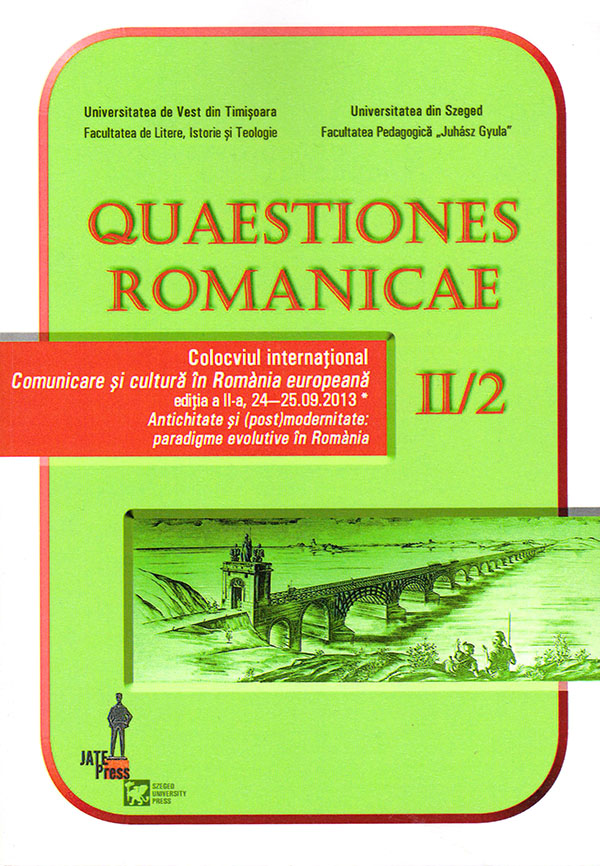Forme vechi latineşti păstrate în toponimia văilor Bistra şi Sebeş
Abstract: (Old Latin Forms Preserved in the Toponymy of Bistra and Sebeş Valleys) Linguistics and archeology are two sciences that contribute decisively to a better knowledge of the history of peoples and the establishment of events that took place in a certain region from the beginning of times to the present moment. Tributaries of the Timiş, the rivers Bistra and Sebeş make their way through the beautiful abrupt forms of relief of the valleys that bear their names. The progression from the plains to the high peaks of the Tarcu Mountains, Poiana Rusca, and Muntele Mic conveys the area under scrutiny into a famous geographical unit which has been inhabited for a very long time. Corollary to its geographical location, the territories of the Bistra and Sebeş valleys benefited from the Roman civilisation, as the Roman way of life quickly spread around the region. The oldest stratum inherited from the Dacian vernacular population preserves few toponyms, however, they are of paramount historical and linguistic value. The traces of a Dacian-Roman civilisation have been discovered in the following settlements: Borlova, Băuţar, Caransebeş, Iaz, Marga, Măru, Poiana Mărului, Ruschiţa, Var, Voislova, Zăvoi.
Keywords: Toponymy, Etymology, Vernacular origin, Bistra and Sebeş valleys.
Rezumat: Lingvistica şi arheologia sunt două ştiinţe care contribuie decisiv la o mai bună cunoaştere a istoriei popoarelor, la stabilirea evenimentelor ce au avut loc pe un anumit teritoriu de-a lungul epocilor care s-au succedat din cele mai îndepărtate timpuri şi până în prezent. Afluenţi ai Timişului, râurile Bistra şi Sebeş străbat relieful accidentat al frumoaselor văi ce le poartă numele. Trecerea treptată de la câmpie la piscurile înalte ale munţilor Ţarcu, Poiana Ruscă, Muntele Mic face din zona anchetată (valea Bistrei şi a Sebeşului) o unitate geografică foarte cunoscută, locuită din cele mai vechi timpuri. Consecinţă a poziţiei lor geografice, teritoriile văilor Bistrei şi Sebeşului s-au bucurat din plin de avantajele civilizaţiei romane, modul de viaţă şi de gândire romană răspândindu- se cu repeziciune aici. Stratul cel mai vechi, moştenit de la populaţia autohtonă dacă, păstrează puţine toponime, dar de o valoare istorică şi lingvistică deosebită. Urme ale civilizaţiei daco-romane au fost descoperite în localităţile: Borlova, Băuţar, Caransebeş, Iaz, Marga, Măru, Poiana Mărului, Ruschiţa, Var, Voislova, Zăvoi.
Cuvinte-cheie: Toponimie, etimologie, origine autohtonă, valea Bistrei şi a Sebeşului.
